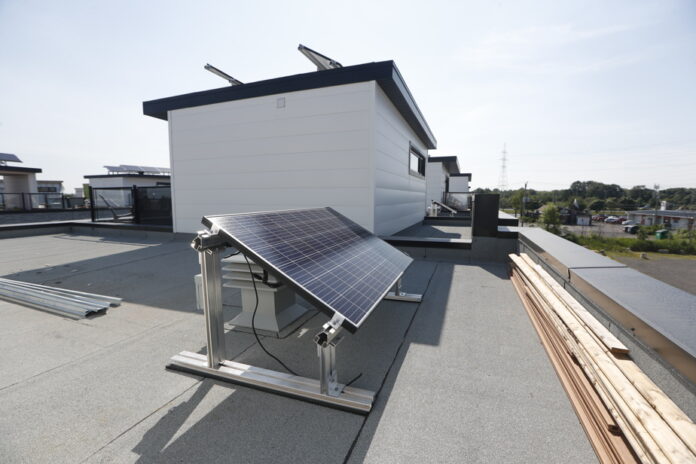Quebec cannot deprive itself of the great potential of the roofs of available buildings which, once equipped with solar panels, could provide up to 25% of Hydro-Québec’s future electricity needs, according to a group of companies supported by energy experts.
In a brief submitted as part of the consultation on Quebec’s energy future, the group proposes measures to increase the province’s solar potential, which is currently very underused, explain Mike Perreault and Marco Deblois, respectively president and general manager of Rematek Energy.
The leaders of the company that specializes in solar installations are not disinterested, but they say they believe that it is above all Quebec that would benefit from exploiting the solar sector.
“We are not saying that we need solar rather than wind power, they specify. They say we need both. »
The plan submitted to the government suggests that it is realistic to seek 2000 megawatts of solar energy with tenders reserved for this type of energy and an additional 2000 megawatts by encouraging the installation of solar panels on the roofs of residential, commercial and institutional buildings that can accommodate them. The cautious version of this plan, called “We count on the roof”, could meet 12% of the needs identified by Hydro-Québec by 2032, a share that could reach 25% in a more aggressive scenario.
By adding a 20% tax credit to that offered by the federal government in its latest budget, Quebec could encourage building owners to invest in solar panels and storage facilities. With the 30% federal tax credit, a commercial property owner can expect a return on their investment in 12.2 years. A provincial tax credit would reduce this period to less than 10 years and encourage building owners to invest in solar energy, say the leaders of Rematek Énergie, which built the solar roof of Maison Simons, in Quebec, and that of the architectural firm Lemay in Montreal.
Another way to encourage Quebecers to invest in solar energy would be to buy this energy at an attractive rate, estimated at 16 cents per kilowatt hour for a residence and 13 cents per kilowatt hour for a commercial building. This tariff, at least twice as high as the cost currently paid by Hydro-Québec to private wind energy producers (6 cents per kilowatt hour), may seem too high, recognizes Mike Perreault. “It needs explaining: a residence or business equipped with solar panels provides energy where it is consumed and does not require costly investments in a transmission and distribution network. It is because these costs are not considered that wind energy seems cheaper. »
Solar panels coupled with storage can also help reduce pressure on the Hydro-Québec network during peak periods, he adds.
Hydro-Québec limits to 50 kilowatts the volume of electricity that can be injected into its network by self-producers of energy. This is a major obstacle for building owners who would like to invest in large-capacity solar installations because they cannot resell their surpluses to Hydro-Québec.
The Government of Quebec, for its part, could do more to accelerate the development of the solar sector by requiring, for example, that future battery factories that will be set up in Quebec have solar roofs.
A Hydro-Québec call for tenders devoted to solar energy would be another way to encourage the development of the sector, suggest stakeholders in the sector. The Minister of Economy and Energy, Pierre Fitzgibbon, was open to this possibility which would highlight the advantages of solar: its speed of production, better social acceptability and a contribution to the peak demand.
During Hydro-Québec’s recent call for tenders for renewable energy, only one bid for a 32.4 megawatt solar park in Matane was received, and was not selected.















